ACE2 shedding exacerbates sepsis-induced gut leak via loss of microbial metabolite 5-methoxytryptophan
- PMID: 40442816
- PMCID: PMC12123736
- DOI: 10.1186/s40168-025-02128-4
ACE2 shedding exacerbates sepsis-induced gut leak via loss of microbial metabolite 5-methoxytryptophan
Abstract
Background: Sepsis, a critical organ dysfunction resulting from an aberrant host response to infection, remains a leading cause of mortality in ICU patients. Recent evidence suggests that angiotensin-converting enzyme 2 (ACE2) contributes to intestinal barrier function, the mechanism of which is yet to be explored. Additionally, alterations in intestinal microbiota and microbial metabolites could affect gut homeostasis, thus playing a potential role in modulating sepsis progression.
Results: ACE2 shedding weakens the integrity of the intestinal barrier in sepsis. Mice deficient in ACE2 exhibited increased intestinal permeability and higher mortality rates post-operation compared to their wild-type counterparts. Notably, ACE2 deficiency was associated with distinct alterations in gut microbiota composition and reductions in protective metabolites, such as 5-methoxytryptophan (5-MTP). Supplementing septic mice with 5-MTP ameliorated gut leak through enhanced epithelial cell proliferation and repair. The PI3K-AKT-WEE1 signaling pathway was identified as a key mediator of the beneficial effects of 5-MTP administration.
Conclusion: ACE2 plays a protective role in maintaining intestinal barrier function during sepsis, potentially through modulation of the gut microbiota and the production of key metabolite 5-MTP. Our study enriched the mechanisms by which ACE2 regulates gut homeostasis and shed light on further applications. Video Abstract.
Keywords: 5-methoxytryptophan; Angiotensin-converting enzyme 2; Bacterial metabolite; Gut leak; Sepsis.
© 2025. The Author(s).
Conflict of interest statement
Declarations. Ethics approval and consent to participate: Human serum specimen collecting and medical records access were approved by the Ethics Committee of Nanfang Hospital, Southern Medical University (Approval Number: NFEC-2023–377). Consent for publication: This manuscript does not contain data from any individual person. Competing interests: The authors declare no competing interests.
Figures


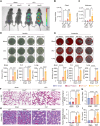
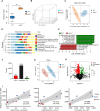
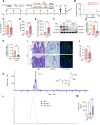
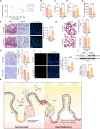
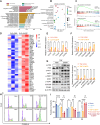
References
-
- Xie J, Wang H, Kang Y, Zhou L, Liu Z, Qin B, Ma X, Cao X, Chen D, Lu W, et al. The epidemiology of sepsis in Chinese ICUs: a national cross-sectional survey. Crit Care Med. 2020;48(3):e209–18. - PubMed
MeSH terms
Substances
Grants and funding
- 202312121006/National College Students' Innovation and Entrepreneurship Training Program
- 202201020206/Science and Technology Projects in Guangzhou
- 82170641 and 81873583/National Natural Science Foundation of China
- 2021A1515012595/Guangdong Provincial Science and Technology Projects
- 2023A041/President Foundation of Nanfang Hospital, Southern Medical University
LinkOut - more resources
Full Text Sources
Medical

